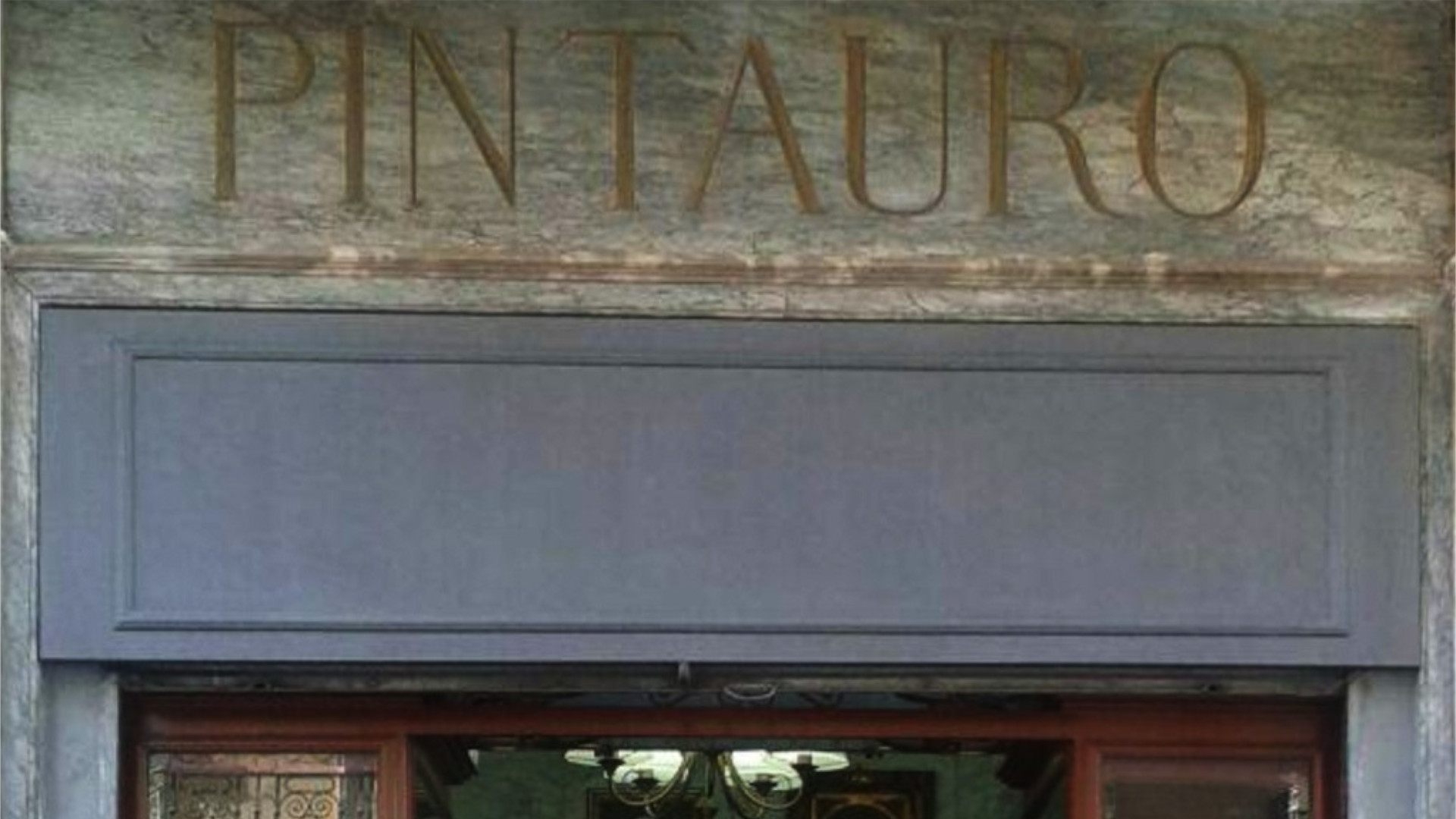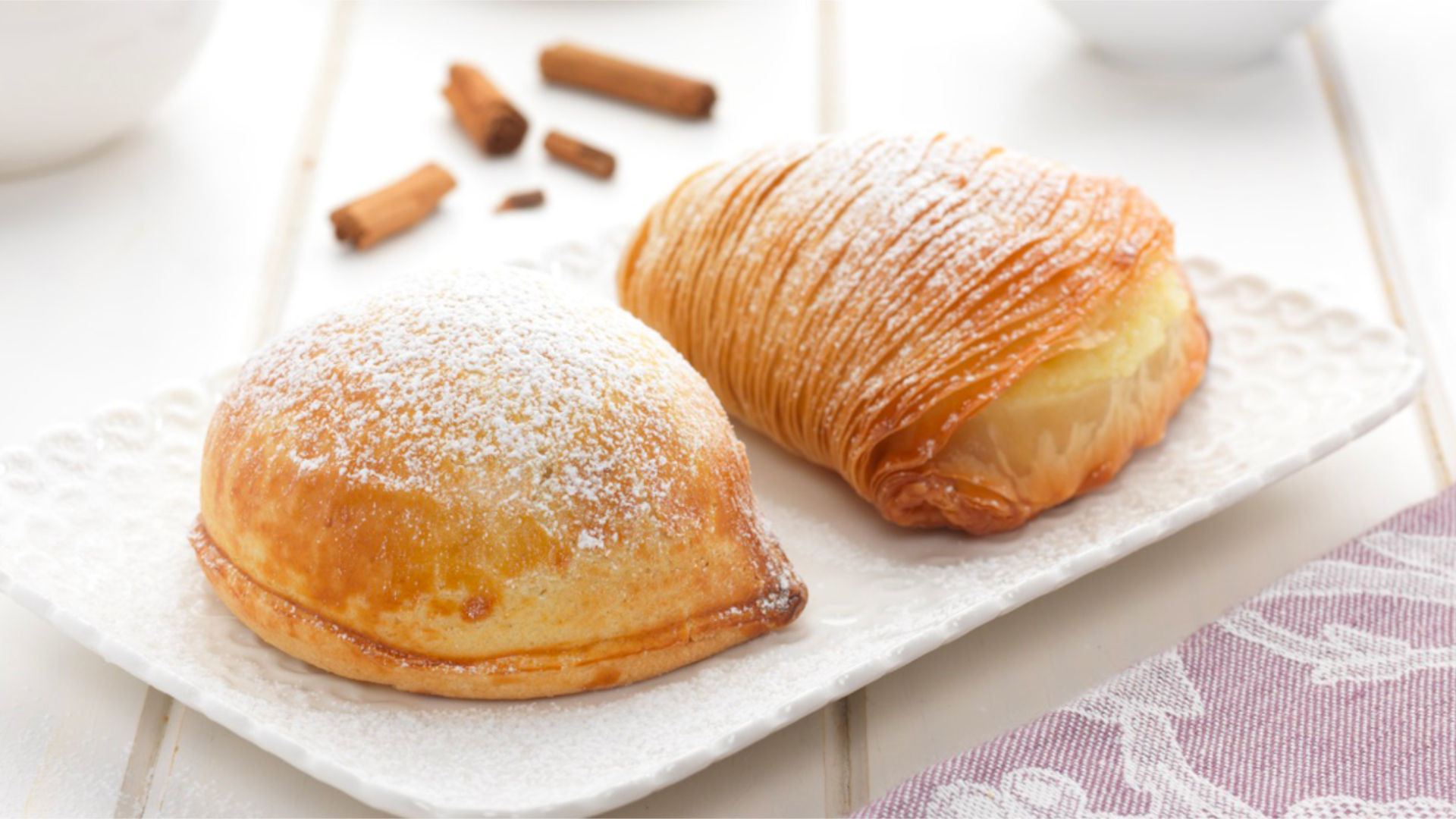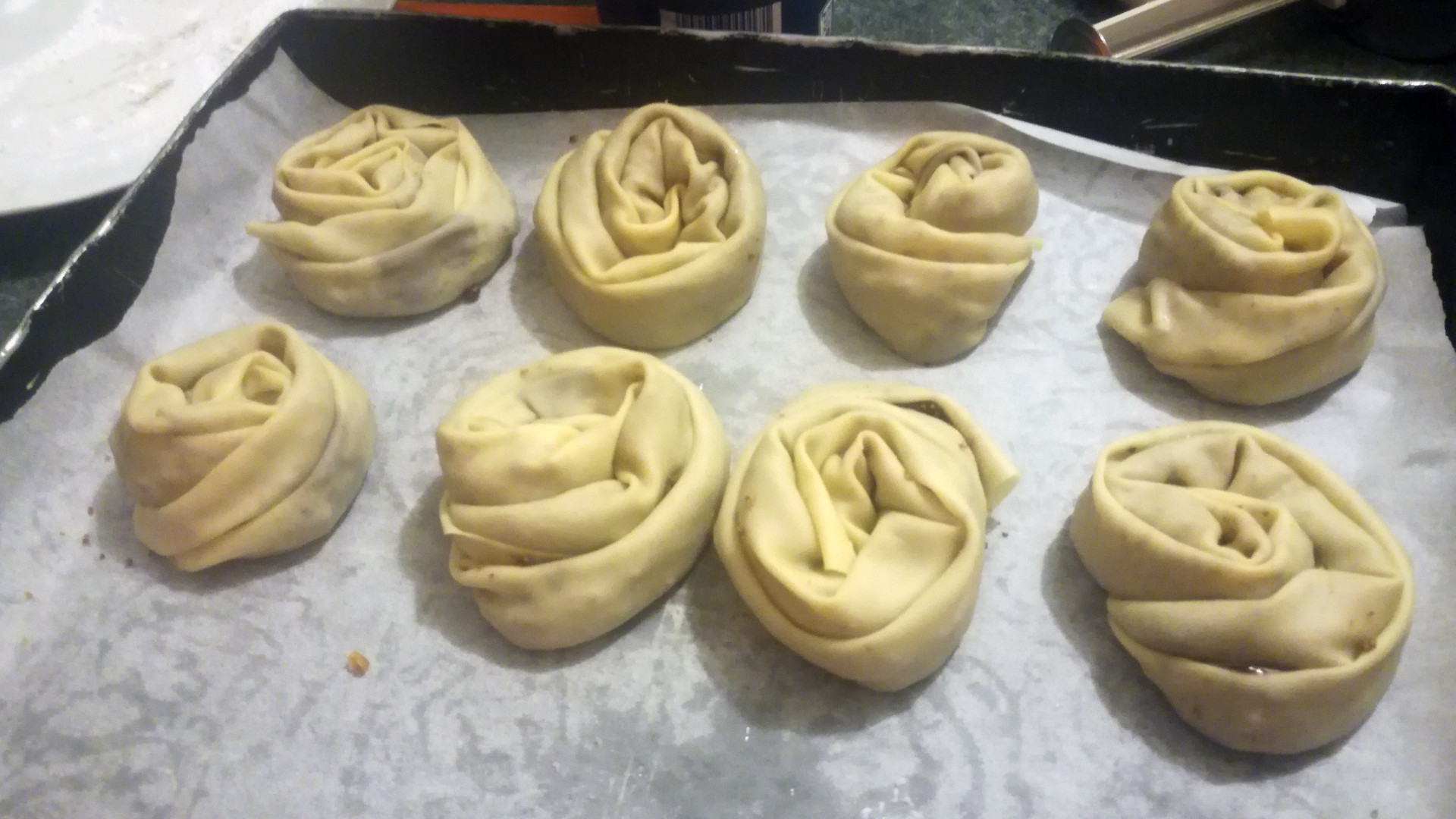Between Amalfi and Positano at midnight
In a convent and cloister, there was
Mother Clotide, the sister cook
who prayed from morning to night
but when the urge struck
prepared two layers of pastry dough
one laid below and the other above
and stuffed it with a little ricotta
with egg and vanilla and zest.
With all this stuff in it
this dessert was something fabulous—
Taking the name of Santarosa
and coming to all the peasants
who plowed the local soil …
Be they curly or short crust, you can’t leave Naples without trying a Neapolitan sfogliatella! Undeniably one of the cities of a thousand sensory experiences, the “sfujiatell” — as it is called in the Neapolitan dialect (I wouldn’t try to pronounce it…) — provides intense sensations to Neapolitans and tourists alike in its delightful aroma that permeates the streets and the alleys of the city. Whether it’s hot near a cup of coffee in the morning, a snack in the afternoon, or an evening dessert, it’s always a good time to have one! Alongside the babà, the sfogliatella has become incredibly famous over the course of several centuries, all things considered. As one of the many culinary symbols of Naples, there isn’t a bar, pastry shop, or laboratory that doesn’t make delectably flaky, cream-filled sfogliatelle on a daily basis. As the sign of the Attansio bakery – one of the most famous in town – reads: “Naples holds three things dear: the sea, Vesuvius, and the sfogliatelle.” In town it is “compulsory” to eat them on January 31, the day when Saint Ciro is celebrated.
The OriginsLegends state that in 1600, on the
Amalfi Coast between Furore and Conca dei Marini (roughly 40 miles south of Naples), precisely in the convent of Saint Rose, one of the nuns of the cloister, Mother Clotide, noticed some leftovers from the semola flour soaked in milk. Instead of throwing it away, she decided to experiment, mixing it with ricotta, fruit juice and lemon liqueur in a way that formed a filling. She surrounded this filling by two pieces of pastry dough reminiscent of the shape of a monk’s hood and baked it in a preheated oven. The dessert was enjoyed by all the townsfolk and the nuns alike and it was given the name of Santa Rosa (Saint Rose) in honor of the patron saint of the convent. The tradition of pastry associated with holiness has made its way, as is the case of
eggplant with chocolate, limoncello, or nocillo, prepared by the nuns that then sell it.
From Amalfi to Naples

It seems that before this dessert made its way to Naples, a good 200 years passed. In fact, according to tradition, it was not until 1818 that an innkeeper, Pasquale Pintauro, came to recognize this delicacy during a trip to Amalfi and, after trying it, remained ecstatic about it. He decided, however, to revise the recipe, eliminating the cream and the sour cherries from the filling and to thin the dough, thus the sfogliatella was born. Pintauro turned his osteria on the central via Toledo of Naples into a confectionery laboratory. The laboratory is still there, with the original sign but under new management, ready to entice the passersby with the fragrant pastries.
Thanks to their originality and quality, the Neapolitan sfogliatelle have been recognized as traditional agro-food products.
The Difference Between Curly and Short Crust
The true difference that one can discern in the two types of Neapolitan sfogliatelle is in the dough that envelops the filling. The curly variety is decisively more complicated and labor intensive. It has a characteristic triangular form of crisp sheets, overlapping in dense layers and a fragrant and delicious cream made from semola flour. The short crust, however, is much simpler to create. It has the same glorious filling, but the pastry that encloses it is soft, similar to short crust, and the shape is rounder.
From the original recipe, then there have arisen numerous varieties. For example, the so-called “lobster tails” are a larger, more elongated shape, filled with cream, whipped cream, or spreadable chocolate cream. Even regions like Abruzzo or Puglia feature their own sfogliatelle. As they call it in Teramo, the sfujatèlle (once again, I wouldn’t dare trying to pronounce it in the local dialect) is softer and with thinner pastry layers than its Neapolitan counterpart. Further, it is filled with grape jam, cacao powder, chopped almonds, sugar, and cinnamon. To Canosa, the Puglian sfogliatella, otherwise known as “the rose”, are even wildly different from the Neapolitan varieties, containing almond, quince jam, chocolate chip, raisin, and white wine.
 Homemade Sfogliatelle
Homemade SfogliatelleIf reading all this trivia about Neapolitan sfogliatella is making your mouth water but you’re too far from Naples to visit the historic Pintauro Bakery in via Toledo or Attanasio’s Bakery of Central Station, a solution could be to make it at home. The only question that remains is: short crust or curly? You decide!
Beware that the work that goes into sfogliatelle napoletane is simple in itself, but can be rather time consuming because the process is comprised of various stages that require resting time to ensure the best final product. In fact, whether making the curly or short crust variety, the dough needs to rest for a whole day in the refrigerator.


